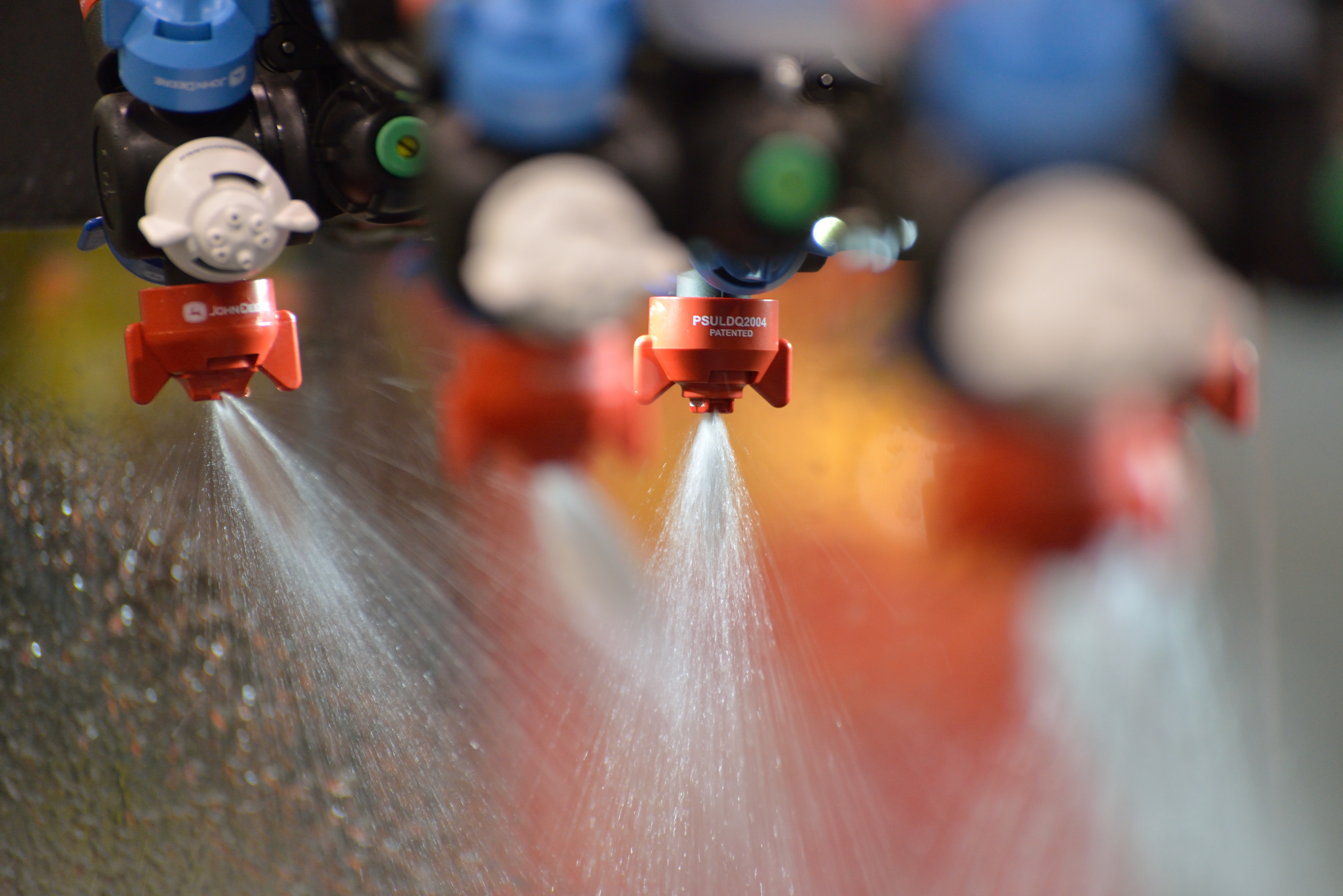How the Right Adjuvant Can Optimize Weed Control

Using the proper additive enhances herbicide performance.
Using the proper additive enhances herbicide performance.
Selecting the right adjuvants can make or break the effectiveness of the corn and soybean herbicides in your weed control program.
Choosing the right product begins with reading the herbicide labels. “Every grower or their agronomist or ag retailer recommending products should review each herbicide’s label as a starting point,” says Joe Ikley, North Dakota State University (NDSU) Extension weed specialist. Labels contain specific recommendations such as types and amounts of spray adjuvants, environmental and water quality influences, and mixing procedures.
Ikley says the next step is to closely scrutinize product hype for additives that claim control of herbicide-resistant weeds or other statements that sound hard to believe. “Adjuvants alone will not reverse biology or create chemistry miracles as far as resistance is concerned. Their main role is to help get the herbicide into the plant and to the site of action,” he says.
As weeds begin to germinate with warmer temperatures, the season turns to burndown application planning for no-till fields. Adjuvants are of utmost importance this time of year, according to Ikley. For example, if straight glyphosate is used, AMS (Ammonium sulfate) is still the best adjuvant. “However, if colder conditions exist at application, including a non-ionic surfactant (NIS) will usually help glyphosate,” he adds. Another popular burndown herbicide, paraquat, works best with a NIS.
Where burndown becomes a bit more complex is with the addition of Group 14 chemistry (PPO Inhibitors). “When you add products like carfentrazone and saflufenacil, they typically require an MSO (methylated seed oil) for the best performance. So, knowing the burndown products you will use and which adjuvants are best for those products is a good starting point to get the season off on a good note,” Ikley says.
The next critical adjuvant use season is postemergence spraying. Similar to burndown applications, adjuvant selection is dependent on the type of chemistry you are using and what those products typically require. Glyphosate is often a part of many postemergence programs. AMS and NIS are typically added with post applications.
“In corn, if you're adding atrazine postemergence or Group 27 herbicides (HPPD Inhibitors) like mesotrione, tembotrione or topramezone, you might add either a COC (crop oil concentrate) or an MSO because an oil-based adjuvant will help out that chemistry combination,” Ikley says.
Another type of adjuvant, high surfactant oil concentrates (HSOC), is a blend of adjuvants that fit specific uses, like arid or low humidity environments and specific tank mixes. HSOCs were primarily developed for situations where glyphosate is tank-mixed with an oil-loving herbicide. “Just don’t use HSOC or any oil adjuvant when using glyphosate alone, or you’ll have a bad day,” Ikley adds.
For soybeans, you’ll follow similar glyphosate tank-mix rules. An oil-based adjuvant works well with Group 14 herbicides (PPO Inhibitors) like lactofen, fomesafen, or acifluorfen. But if you tank-mix one of these with glyphosate, an HSOC will improve efficacy.
Any grower using the Enlist or Xtend soybean systems must select from an approved list of adjuvants because not all surfactants are approved for use. “The new reality with those two traits of soybeans is that if we want to use a product, any product in combination with them, the products must be pre-approved and listed on the website,” Ikley says.
Too much wind or product volatility at application has led to the mandates listed for dicamba, with more growers opting to add drift retardants, deposition aids or volatility reduction adjuvants to many applications. “When these are added, just be sure the spray pattern looks unaffected because a collapsed pattern will reduce weed control,” Ikley says.
Drought stress conditions or low humidity can cause a thicker cuticle on weed leaf surfaces that can reduce herbicide penetration. “In those cases, shifting from a NIS to a COC or a hotter MSO will help get the herbicides into the plants. But when weather is favorable with a lot of moisture and higher humidity, growers should dial back from a MSO or even a COC to reduce possible crop injury,” he adds.

Finally, growers should test and monitor their water sources. Hardness, improper pH or abundant minerals can reduce weed control efficacy. The most commonly used herbicide impacted by hard water is glyphosate. Calcium or other cations tend to bind directly to the glyphosate molecule. Water conditioning agents like AMS will keep calcium cations from tying up glyphosate.
Water pH is another component that doesn’t get enough attention, especially when dealing with herbicide-resistant weeds. Certain herbicides have better solubility at different pH levels. For example, Group 2 herbicides (ALS Inhibitors) like nicosulfuron used in corn or chlorimuron used in soybeans are more soluble at higher pH. Other herbicides, like glyphosate, require a low pH.
“The good news is that most glyphosate formulations will drop the pH of the water as soon as you add it to the water,” Ikley says. “It’s best to check your water with inexpensive paper pH test strips, especially when using these products that need a certain pH. This quick test will help ensure the products will easily move through the cuticle and other barriers and get inside the weed.”
Content Provided by DTN/Progressive Farmer.
Further research:
Compendium of Herbicide Adjuvants (Purdue & Southern Illinois University, 2016): http://siu-weeds.com/adjuvants/adjprod-postprint.htm
Adjuvants and the Power of the Spray Droplet (Purdue, 2014) https://ppp.purdue.edu/adjuvants-and-the-power-of-the-spray-droplet/
Role of Spray Adjuvants with Postemergence Herbicides (ISU) https://crops.extension.iastate.edu/encyclopedia/role-spray-adjuvants-postemergence-herbicides
2022 NDSU Weed Control Guide (Adjuvant section: pgs 84-86) https://www.ndsu.edu/agriculture/sites/default/files/2022-01/ND%20Weed%20Control%20Guide.pdf
Enlist One and Enlist Duo herbicides are not registered for sale or use in all states or counties. Contact your state pesticide regulatory agency to determine if a product is registered for sale or use in your area. Enlist One and Enlist Duo herbicides are the only 2,4-D product authorized for use in Enlist crops. Always read and follow label directions. XTENDIMAX is a registered trademark of Monsanto Technology LLC.
Find expert insights on agronomics, crop protection, farm operations and more.